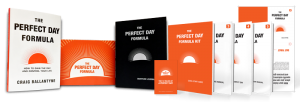A Centuries-Old Technique for Getting More Done

In March 1859, Charles Dickens began writing his best-selling novel, “A Tale of Two Cities.” Like any major undertaking, it took tremendous discipline, and Dickens managed it by separating his days into blocks.
As described in the book, “Daily Rituals,” Dickens rose at 7 a.m. and spent the next two hours eating breakfast and preparing for the day. He then wrote with “business-like regularity”—an unfailing ritual that continued without interruption and in complete silence until early afternoon, allowing him to complete 2,000 words per day.
He then had lunch, and followed that with a three-hour walk around the streets of London, where he sought inspiration for the scenes and characters that filled his work. In the evenings, he socialized with friends and family.
Dickens was not the only great creative figure to take advantage of deep work time blocks. Composers such as Beethoven, Tchaikovsky, and my personal favorite, Chopin, all worked diligently in morning chunks and then spent afternoons on long leisurely walks—often in the countryside—looking for inspiration. In the evenings, they devoted a block of time to socializing.
In some ways, life was much simpler then; I hear many of my clients say there are too many competing interests for their time in this day and age. There’s no way they could make a Dickensian schedule work for them.
Rubbish. Or poppycock, as Dickens might say.
Life can be just as simple—and productive—now if you’re willing to commit to doing the deep work. You just have to build the discipline to structure your days, block temptations, and make the right decisions for your life.
Here’s how I do it, and how I coach my Perfect Life clients to design their days:
Start by splitting your waking hours into 5-7 blocks of 2-3 hours.
Before we show you what to do with those, let’s first look at what not to do.
You see, the average—and struggling—person would put the blocks to poor use. It would look something like this:
- 2-hour “wake up scramble,” bumbling from the snooze button to rushing through breakfast and racing the kids off to school
- 3-hour “start of the work day scramble,” being stuck in traffic, cursing the morning commute, and wasting time listening to talk radio or dangerously scrolling through their phone while driving, followed by the first hour of work catching up on email or returning messages
- 2-hour “lunch at desk catch-up scramble,” wolfing down fast food (or not eating at all), while trying to get some of the work done that should have been tackled earlier—if not the day before
- 2-hour “energy slump block” where poor lifestyle choices catch up to them and leave them nodding off in their chair
- 3-hour “mad rush on emergency deadlines scramble” to finish off vital projects before the end of the day, resulting in a late departure from work
- 2-hour “late for dinner again scramble” as they weave frantically through traffic, only to walk through the door into a chaotic home filled with a surly spouse
- And finally, a 2-hour “frustrated finale with the kids and pre-bed argument with the spouse” that leaves them tossing and turning through a bonus 2-hour insomnia block
Only 5 more hours before they get to do it all over again!
Life can be just as simple—and productive—now if you’re willing to commit to doing the deep work. You just have to build the discipline to structure your days, block temptations, and make the right decisions for your life.
That’s not how you want to live your life, is it?
Here’s the good news: It doesn’t have to be that way.
Instead, you can use your time blocks to build in focused, proactive deep work free of distractions. The key is optimizing your performance and taking back control of your life. I urge my clients to set up their days as closely as possible to this schedule (and you should, too):
Block 1 – Do the deep work on your number-one priority in life and deep work on yourself (physically and mentally) before breakfast
Block 2 – Spend time with family, eating breakfast, and getting to work early
Block 3 – Do more deep work in the morning, focusing on the day’s first major priority
Block 4 – Enjoy a healthy lunch, reflect, and relax
Block 5 – Get back into deep work in the afternoon, focusing on your second big priority of the day
Block 6 – Plan and prepare for the next day and make the transition from work-life to home-life
Block 7 – Make family time your last big priority of the day, focusing on being totally present for your spouse and kids (i.e. separated from your devices and work distractions)
I use the idea of deep work in this time block approach a lot. The idea originally came from Cal Newport, author of “Deep Work.”
“Deep work,” Newport says, “is the ability to focus without distraction on a cognitively demanding task. It’s a skill that allows you to quickly master complicated information and produce better results in less time.”
Dickens’ “A Tale of Two Cities” is the perfect example of a deep work achievement—written with dedicated blocks of writing time. My deep work on this essay—drafted in a 75-minute post-dinner creative burst—is another great example.
Not only does deep work make you more productive, Newport argues, but it also “will make you better at what you do and provide the sense of true fulfillment that comes from craftsmanship. In short, deep work is like a super power in our increasingly competitive 21st century economy.”
When Dickens wrote his eternal words, “It was the best of times, it was the worst of times, it was the age of wisdom, it was the age of foolishness,” he might as well have been talking about our age of digital distractions—and our constant struggle with productivity. There are plenty of temptations around us, but we are called to the deep work that will grow ourselves and move our lives forward.
The choice is yours—to take advantage of this age-old approach to productivity, or choose foolishness and give in to the latest pings, notifications, glitz, and glamour.
The former promises true fulfillment from deep work, while the latter delivers only short-term rewards and long-term regrets.
I urge you to choose the better option, to take out pen and paper (or perhaps even the scripting pad from “The Perfect Day Formula” Kit), and block out the times in your day for deep work. Now is the chance to build your everlasting legacy.
What will it be?
 Looking for a step-by-step guide for creating efficient, productive days? I think you’ll like my book, “The Perfect Day Formula.” The book is FREE—because I WANT you to benefit from the routines, tricks, and tips I’ve put together over the years—but there’s also “The Perfect Day Formula” Kit, which includes video content, worksheets, and more that will help you build your Perfect Days and start achieving your biggest goals.
Looking for a step-by-step guide for creating efficient, productive days? I think you’ll like my book, “The Perfect Day Formula.” The book is FREE—because I WANT you to benefit from the routines, tricks, and tips I’ve put together over the years—but there’s also “The Perfect Day Formula” Kit, which includes video content, worksheets, and more that will help you build your Perfect Days and start achieving your biggest goals.
We all struggle with managing time. But you don’t have to—get your FREE copy of “The Perfect Day Formula” today, and I promise you’ll see results within a week.
